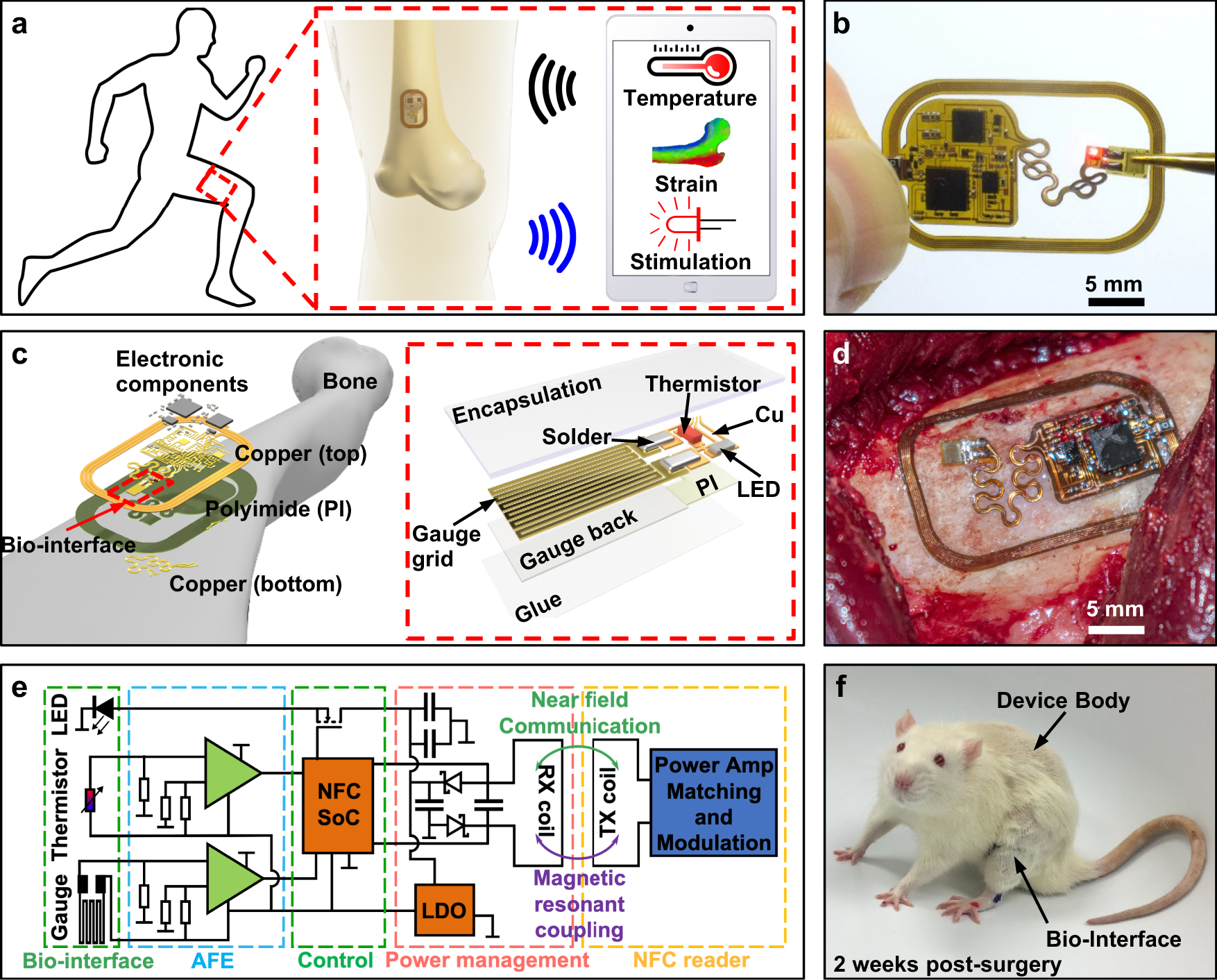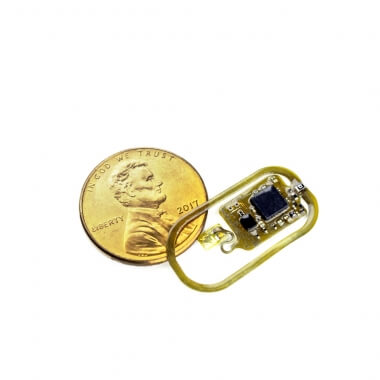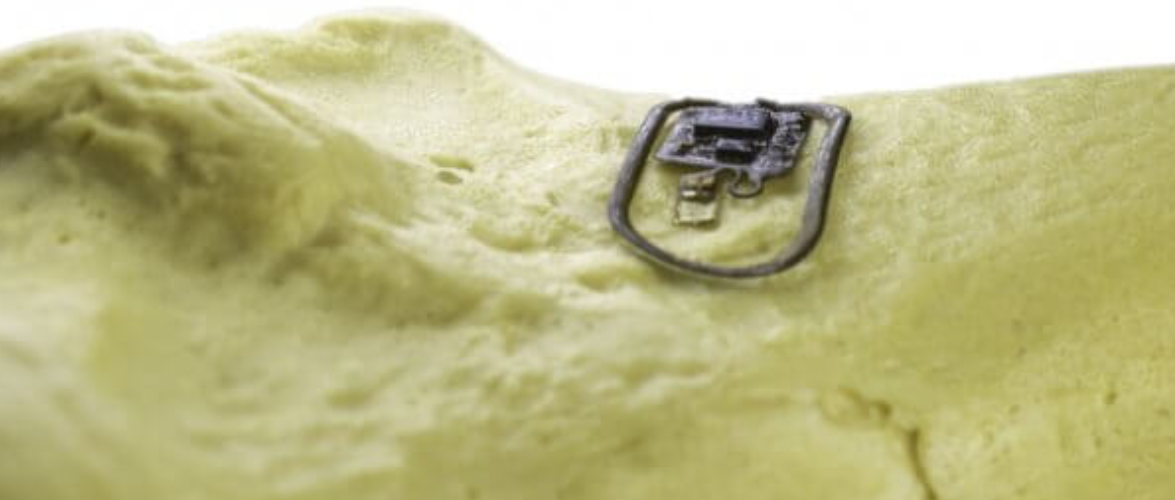The following report is from Study Finds:
A microchip attached to a bone in your body may be the future of preventing osteoporosis. Scientists from the University of Arizona have developed an ultra-thin computer which they hope will one day monitor a patient’s bone health from inside their own bodies.
The microchip, which is as thin as a sheet of paper and about the size of a penny, uses wireless technology to keep track of the bone’s health and its ability to heal after injuries or fractures.
As a surgeon, I am most excited about using measurements collected with osseosurface electronics to someday provide my patients with individualized orthopedic care – with the goal of accelerating rehabilitation and maximizing function after traumatic injuries.
Study co-senior author Dr. David Margolis, assistant professor of orthopedic surgery in the UArizona College of Medicine, in a university release.

Bone Health Is A Major Concern For Aging Populations
Study authors note that bone fractures due to fragility and conditions such as osteoporosis result in patients spending more days in hospitals than heart attacks, breast cancer, and prostate cancer.
While their new health monitor is not yet ready for trials in humans, the team believes these chips could one day improve the standard of care for brittle bones and other complications from aging.
Being able to monitor the health of the musculoskeletal system is super important. With this interface, you basically have a computer on the bone. This technology platform allows us to create investigative tools for scientists to discover how the musculoskeletal system works and to use the information gathered to benefit recovery and therapy.
Co-senior author Philipp Gutruf, assistant professor of biomedical engineering and Craig M. Berge faculty fellow in the College of Engineering.
Batteries Not Included
When it comes to attaching a tiny chip to your bones, scientists had to create a computer thin enough that it won’t irritate the muscles which surround the bones. Gutruf adds that muscle movement could also pull a larger microchip right off the bone.
The device’s thin structure, roughly as thick as a sheet of paper, means it can conform to the curvature of the bone, forming a tight interface. They also do not need a battery. This is possible using a power casting and communication method called near-field communication, or NFC, which is also used in smartphones for contactless pay.
Co-first author Alex Burton, a doctoral student in biomedical engineering.

Another obstacle the UArizona team had to overcome was the natural ability of bones to shed old cells. Just like your skin, the bones also renew their outer layers, meaning a traditional “glue” wouldn’t work for attaching the microchip.
Researcher John Szivek – a professor of orthopedic surgery and biomedical engineering – developed an adhesive containing calcium particles which are similar to regular bone cells.
The bone basically thinks the device is part of it, and grows to the sensor itself. This allows it to form a permanent bond to the bone and take measurements over long periods of time.
How Will Doctors Use Osseosurface Electronics In The Future?
The team believes physicians will be able to attach these microchips to broken or fractured bones during surgery, which will monitor the healing process moving forward. Study authors say this would be key for osteoporosis patients, who often suffer refractures after a major injury.
Knowing in real time how well a bone is healing can help doctors in the future figure out the right treatment options after surgery. It can also inform doctors about when it’s time to remove plates and screws which often hold bones together after a break.
The study is published in the journal Nature Communications.

AUTHOR COMMENTARY
It has tech used for smartphones and contactless payments systems, you say?
[16] And he causeth all, both small and great, rich and poor, free and bond, to receive a mark in their right hand, or in their foreheads: [17] And that no man might buy or sell, save he that had the mark, or the name of the beast, or the number of his name. [18] Here is wisdom. Let him that hath understanding count the number of the beast: for it is the number of a man; and his number is Six hundred threescore and six.Revelation 13:16-18
Almost every time these new inventions come out, it is always pushed in a way that sounds good on the surface, until you quickly realize it hardly gets used for what it was touted as, and then contorted into the real agenda the elites have for it.
A New Microchip The Size Of Dust Could Be Used In Cybernetic Medicine
New Microchip Turns Finger Nails Into Business Cards
Military Developing Chip/Vaccine To End All Pandemics
[7] Who goeth a warfare any time at his own charges? who planteth a vineyard, and eateth not of the fruit thereof? or who feedeth a flock, and eateth not of the milk of the flock? [8] Say I these things as a man? or saith not the law the same also? [9] For it is written in the law of Moses, Thou shalt not muzzle the mouth of the ox that treadeth out the corn. Doth God take care for oxen? [10] Or saith he it altogether for our sakes? For our sakes, no doubt, this is written: that he that ploweth should plow in hope; and that he that thresheth in hope should be partaker of his hope. (1 Corinthians 9:7-10).
The WinePress needs your support! If God has laid it on your heart to want to contribute, please prayerfully consider donating to this ministry. If you cannot gift a monetary donation, then please donate your fervent prayers to keep this ministry going! Thank you and may God bless you.









That is spooky! Something out of a sci-fi dystopian nightmare! These so-called scientists have a special place in hell, you can guarantee that! Take your techno-implants and go to hell!
Yuck! And Ouch!